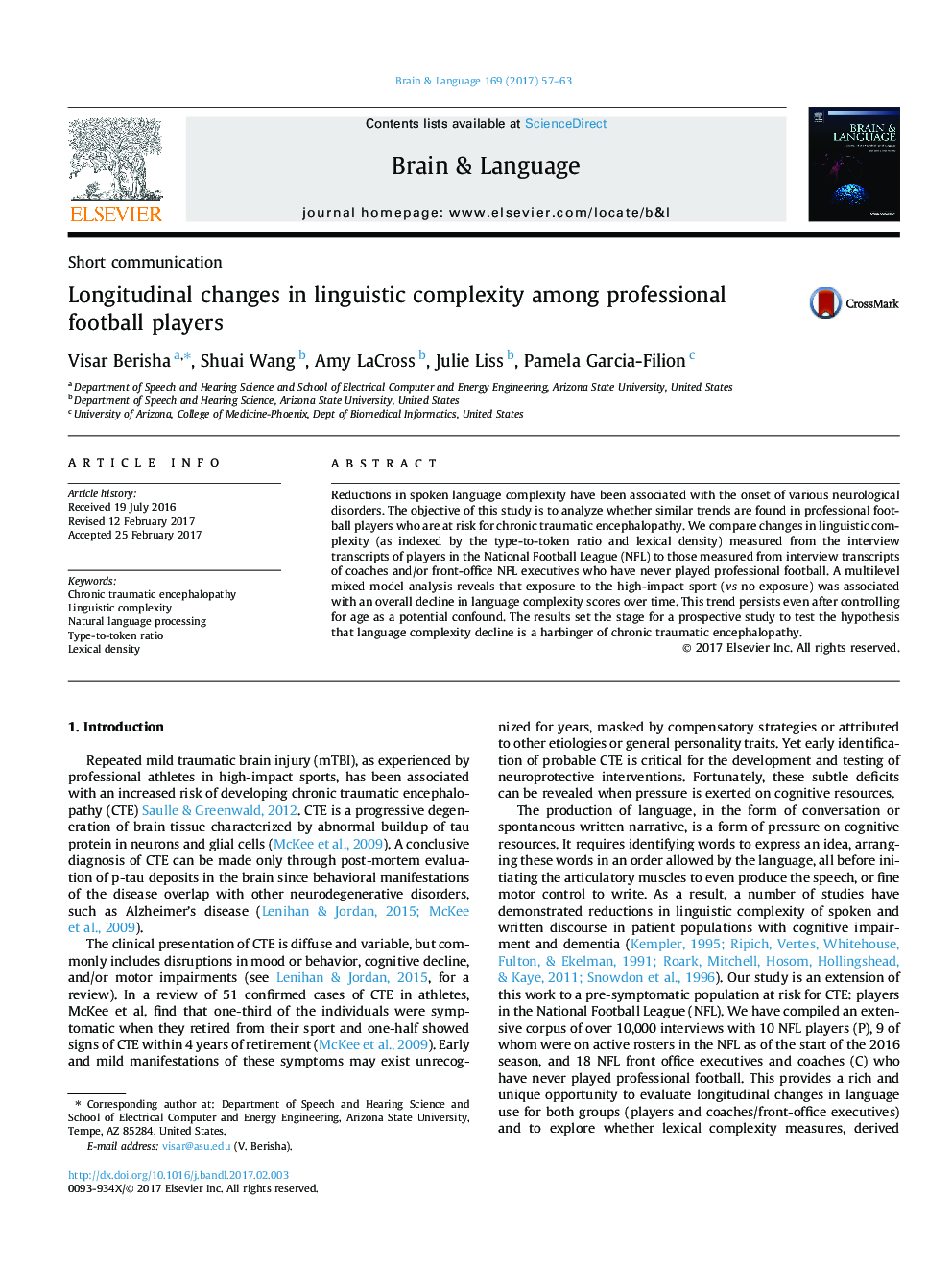| Article ID | Journal | Published Year | Pages | File Type |
|---|---|---|---|---|
| 5041340 | Brain and Language | 2017 | 7 Pages |
Abstract
Reductions in spoken language complexity have been associated with the onset of various neurological disorders. The objective of this study is to analyze whether similar trends are found in professional football players who are at risk for chronic traumatic encephalopathy. We compare changes in linguistic complexity (as indexed by the type-to-token ratio and lexical density) measured from the interview transcripts of players in the National Football League (NFL) to those measured from interview transcripts of coaches and/or front-office NFL executives who have never played professional football. A multilevel mixed model analysis reveals that exposure to the high-impact sport (vs no exposure) was associated with an overall decline in language complexity scores over time. This trend persists even after controlling for age as a potential confound. The results set the stage for a prospective study to test the hypothesis that language complexity decline is a harbinger of chronic traumatic encephalopathy.
Keywords
Related Topics
Life Sciences
Neuroscience
Biological Psychiatry
Authors
Visar Berisha, Shuai Wang, Amy LaCross, Julie Liss, Pamela Garcia-Filion,
